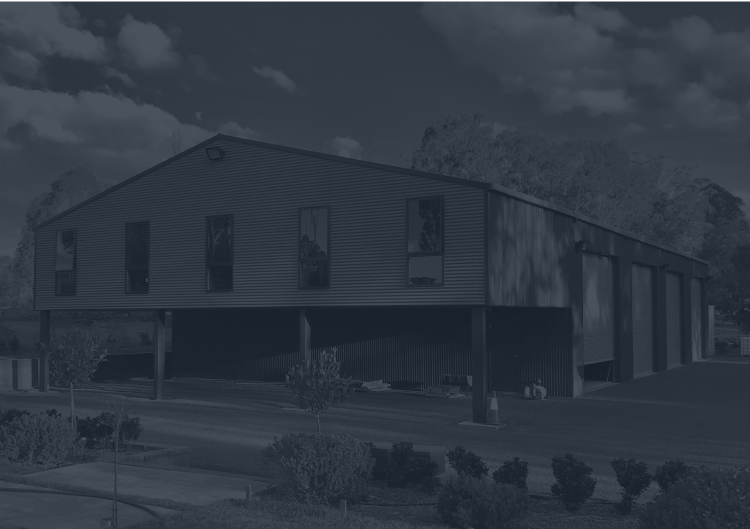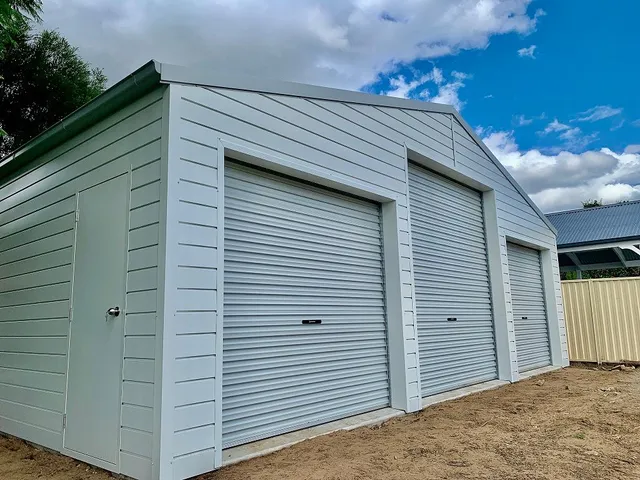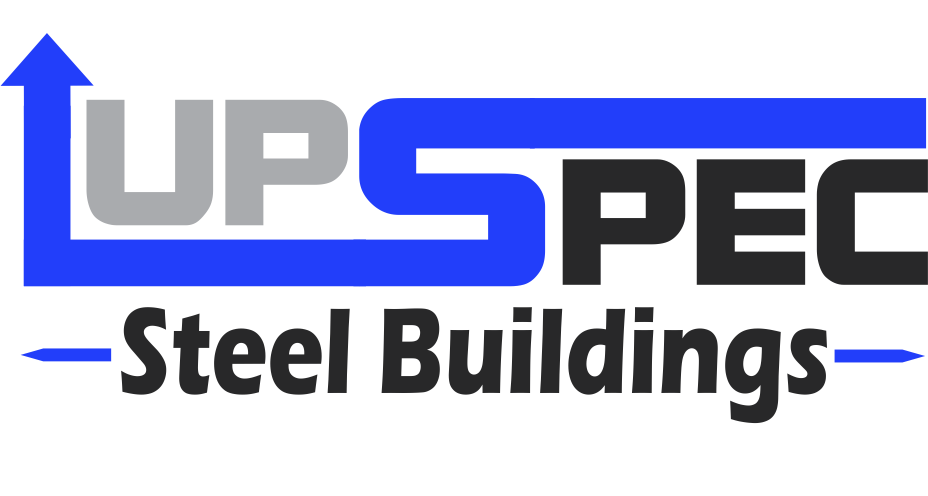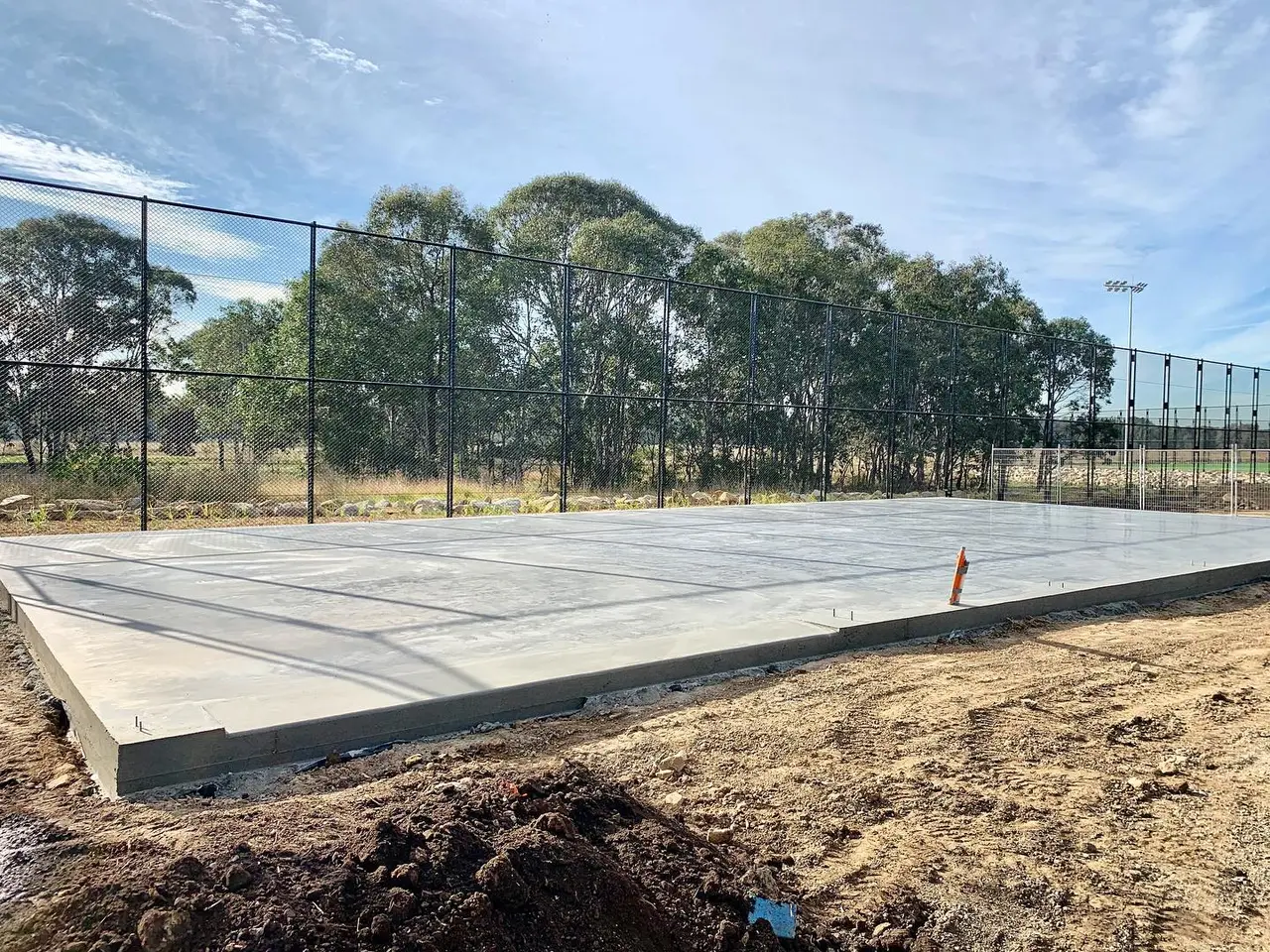
Upspec Blog
Introduction to Shed Concrete Slabs
Before diving deep into the whys and hows, let’s get one thing straight: a solid foundation for your steel building, especially in Australia, is non-negotiable. Think of it like this; would you build your house on sand or a strong concrete base? The answer is pretty clear. For steel buildings, sheds included, a concrete base isn’t just a good idea; it’s essential. This base ensures your building stands firm against winds, heavy rain, and doesn’t succumb to the shifting earth beneath. Plus, it keeps moisture at bay, preventing rust and wear on your steel structure. So, in short, the right foundation secures the longevity and safety of your steel building. Let’s keep things simple and strong, just like your future concrete shed base.
Types of Shed Bases: Concrete vs Others
When you’re planning to put up a steel building in Australia, choosing the right shed base is a crucial decision. Essentially, there are two main types to consider: concrete and other alternatives like gravel. Concrete is the heavyweight champion here. It’s tough, lasts for ages, and gives your steel building a solid foundation. Think of it as the rock holding your building steady against wind and rain. On the flip side, other bases, like gravel, might be easier on your wallet and quicker to lay down but don’t offer the same level of stability or longevity. So, if you’re looking for a base that keeps your building safe and sound for years to come, concrete is the way to go. It’s like choosing between a sturdy pair of boots and flip-flops for a hike. Sure, flip-flops might be easier to slip on, but they’re not going to get you far on rough terrain.
Key Benefits of a Concrete Shed Slabs for Steel Buildings
A concrete shed base is not just a good idea for your steel building; it’s crucial. First off, it gives your structure a solid foundation. No wavering or shifting over time—think of it as the rock under your steel fortress. Besides, it keeps moisture away. Steel and wet conditions? Not the best mix. A concrete base acts like a barrier, keeping your building dry and rust at bay.
Then, there’s the matter of longevity. A well-built concrete base can significantly extend the life of your steel building. You’re not just putting up a structure; you’re making a lasting investment. And let’s not forget about pest control. Rats and termites are no fans of concrete. By choosing a concrete base, you’re setting up a no-entry zone for these unwelcome guests.
To wrap it up, think of a concrete shed base as the unsung hero of your Penrith steel building. It provides stability, protection from moisture, longevity, and a barrier against pests. It’s a straightforward choice for anyone looking to get the most out of their steel structure.
Understanding the Durability of Shed Concrete Slabs
A concrete shed base isn’t just a fancy addition to your steel building; it’s a necessity for durability. Think of it as the strong foundation of your house. Without it, your steel building is like a bookshelf without a bottom. Concrete bases withstand the test of time and weather. They’re strong enough to handle heavy rain, scorching sun, and even freezing temperatures without breaking a sweat. This toughness means your steel building remains stable and safe, no matter what nature throws at it. Plus, a concrete base prevents water damage and pest infestations, common issues with less durable foundations. So, investing in a concrete shed base is not just about making your structure stand; it’s about making it last.
How a Concrete Slab Protects Your Steel Building from Weather
A concrete base is crucial for shielding your steel building from weather-related damage. First off, it prevents water from seeping in. Steel, although sturdy, can suffer from rust when moisture accumulates. A concrete foundation acts as a barrier, ensuring water drains away from your building, not into it. Secondly, it helps with stability during storms. Wind can be a formidable force, but a concrete base keeps your building anchored, reducing the risk of it tipping over or shifting. Lastly, it’s about temperature control. Concrete helps insulate your building against extreme temperatures, whether scorching heat or freezing cold, safeguarding your belongings inside. Simply put, for enduring protection against the elements, a concrete base is non-negotiable.
Step by Step Guide to Preparing a Concrete Shed Base
To ensure your steel building stands strong and lasts long, starting with a solid foundation is crucial. A concrete shed base does just that. Here’s a straight-to-the-point guide to get you started. First, measure the area where your shed will sit. You need precision here because a base too small or too large will cause problems down the line. Second, clear the site. Remove any grass, stones, or debris. This step is about creating a clean slate. Third, it’s time to dig. For a standard shed, about 100mm minimum deep should do the trick. This depth provides a solid footing and helps with drainage. Fourth, compact the soil. Once you’ve dug out your base area, ensuring the ground is as firm as possible is essential. This provides a stable ground for the concrete. Fifth, set up your formwork. These are the wooden frames that shape your concrete base. Ensure it’s level because your shed will be off-kilter if it’s not. Sixth, mix and pour the concrete. You can mix your own or get ready-mixed concrete delivered. Spread it evenly within your formwork, then smooth it out with a trowel. Seventh and last, let it cure. Concrete needs time to harden and gain strength. Give it at least 4-5 days before you start building. There you have it—seven straightforward steps to prepare a concrete shed base that will support your steel building for years to come. Just remember, taking your time in each step is key to a base that’s built to last.
Common Mistakes to Avoid When Installing a Concrete Shed Slabs.
Getting your concrete shed slab right is crucial for the stability of your steel building. A mistake here can lead to serious problems down the line, including structural damage or uneven settling. Here are common pitfalls to dodge: Pouring concrete without proper ground preparation turns your base into a disaster waiting to happen. Clear the area of debris and level the ground before anything else. Skipping reinforcement is a shortcut that costs more in the long run. Steel reinforcements add strength and prevent cracking. Ignoring weather conditions when you pour can ruin the concrete mix. Concrete hates extreme temperatures; aim for a dry, mild day. Lastly, rushing the curing process is like inviting trouble. Concrete needs time to reach its full strength. Be patient and let it cure fully before building on it. Stick to these guidelines, and you’ll lay down a sturdy foundation that your steel building can count on for years.
Maintenance Tips for Your Shed Concrete Slab
Keeping your concrete shed slab in top condition ensures your steel building stays sturdy and durable. A well-maintained base prevents water damage and structural issues. Here are some maintenance tips: Check regularly for cracks or wear. Small cracks can grow if ignored, leading to serious damage. Use a concrete filler to repair minor cracks before they become a problem. Keep the base clean. Remove debris and dirt to prevent moisture accumulation, which can compromise the concrete’s integrity. Ensure proper drainage. Water should not pool on or near your base. Make adjustments or add drainage solutions if necessary to keep water away. Apply a sealant. Consider sealing your concrete base to protect against water and weather damage. This is especially important in areas with extreme weather. Regular maintenance keeps your shed base solid, supporting your steel building for years to come.
Comparison: Cost of Concrete Shed Slabs vs Other Materials
When we talk about setting up a steel building, picking the right foundation is a deal-breaker. Among the options, concrete shed bases stand out for their durability and strength. But how does the cost compare to other materials? Let’s break it down.
A concrete base might seem pricey upfront, but its longevity and low maintenance cost make it a smart pick. On average, the cost can range anywhere from (100 to )150 per square meter, depending on local material costs and labor charges. This might feel like a lot, but consider the alternatives.
Gravel, for instance, might only cost around (50 to )80 per square meter. Cheaper, yes, but it doesn’t offer the same level of stability or resistance to weather changes. Over time, you might find yourself spending more on upkeep and potential repairs..
What we’re saying here is, while there are other materials with lower initial costs than concrete, the blend of durability, maintenance ease, and the hassle-free assurance that your steel building sits on a solid foundation spells out cost-effectiveness in the long haul with concrete. Choosing a concrete base for your steel building is investing in peace of mind, even if it might seem a bit more at the start.
Conclusion: Why Your Steel Building Needs a Concrete Shed Slab
In the end, the bottom line is your steel building absolutely needs a concrete shed base to stand the test of time. Without it, you’re looking at potential problems down the road like shifting, cracking, or even worse, your building settling in ways that could cause damage. Concrete is tough. It keeps your steel building level, stable, and above all, secure. Think of it as the foundation of a house — without a strong foundation, everything else is at risk. Plus, a concrete base adds value. It’s a clear signal to anyone, whether it’s you using the building for years to come or a potential buyer, that this structure is built to last and built with care. Short not sweet, but there it is: A concrete shed base isn’t just recommended; it’s necessary for the longevity and reliability of your steel building.
Share this article

Uncategorised
Farm Shed Maintenance Tips Every Western Sydney Farmer Should Know
Discover essential farm shed maintenance tips for Western Sydney farmers in our blog ‘Farm Shed Maintenance Tips Every Western Sydney Farmer Should Know’.

Uncategorised
Long-Term Value: How Investing in a Quality Shed Can Benefit Your Farm
Discover the benefits of investing in quality farming sheds for your Penrith farm in our blog ‘Long-Term Value: How Investing in a Quality Farming Shed Can Benefit Your Penrith Farm’.

Uncategorised
Top Trends in Colorbond Shed Designs for Sydney Homeowners
Discover the latest colorbond shed designs for Sydney homeowners in our blog ‘Top Trends in Colorbond Shed Designs for Sydney Homeowners’. Transform your property with modern

